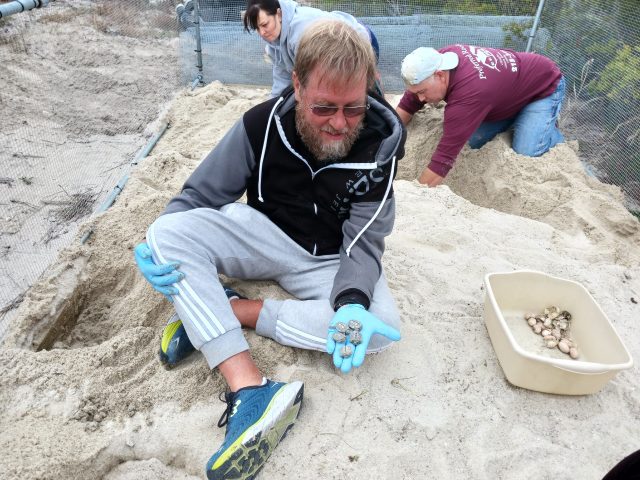
By DONALD WITTKOWSKI
Steve Ahern and five volunteers were using trowels on Saturday to poke around in mounds of fluffy white sand next to the marshlands in the northern tip of Sea Isle City.
Were they digging for buried treasure, or perhaps some historic artifacts from long, long ago?
No, they were searching for something far more valuable to them – live baby diamondback terrapins and clutches of unhatched eggs in a sandy turtle nesting box near Second Street, close to Sea Isle’s border with Strathmere.
Six baby turtles were found alive buried in the sand on Saturday morning. They were hibernating. Ahern, the co-founder of the Sea Isle Terrapin Rescue organization, plans to let the quarter-sized babies go in the surrounding wetlands to give them a chance for survival over the winter.
“They’re a little sleepy because we just woke them up. It’s probably safer to get them out of here for the winter because of the storms. This way, they won’t be exposed,” he explained of placing the turtles in their natural environment.
Ahern and the volunteers were checking the turtle nesting box for babies and unhatched eggs. They will return in the spring to refurbish the box and get it ready for the diamondback terrapins’ summer nesting season.
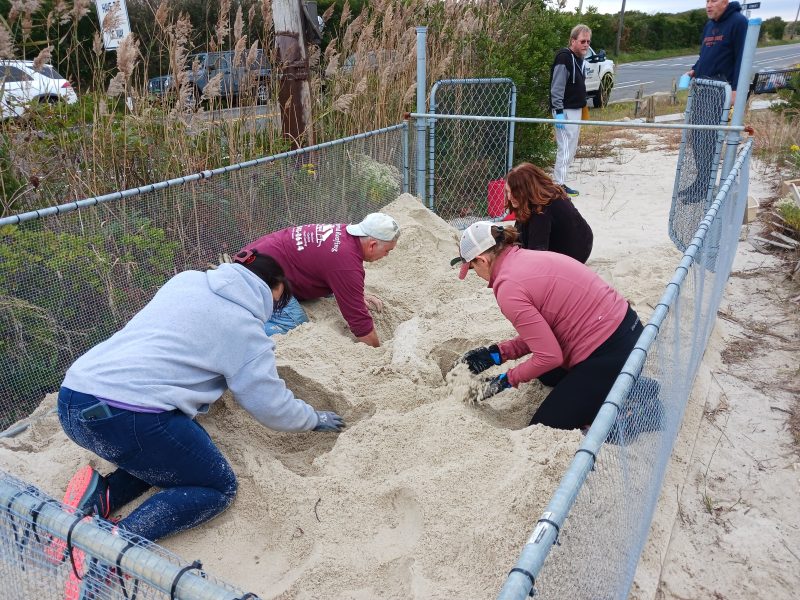
Female diamondbacks emerge from their coastal marshlands habitat from May to July in search of a patch of sandy soil to lay their eggs.
Nesting boxes give turtles an alternative place to lay their eggs. The turtles are not in harm’s way near roads, and the boxes have metal or mesh fencing to keep out predators such as foxes and raccoons, which will eat the eggs.
“It’s sad to see so many turtles crushed on the road. This is a way to save them,” said Dodie Corretini, a member of the Strathmere Fishing and Environmental Club.
Corretini was one of the volunteers who joined with Ahern to dig through the nesting box Saturday. The others included married couples Jackie and Jeff Lawson and Jen and Dan Stuart.
Diamondback terrapins can live for 30 to 40 years, but with roadwork, construction, shore traffic and deaths related to the fishing industry, longevity is always a concern.
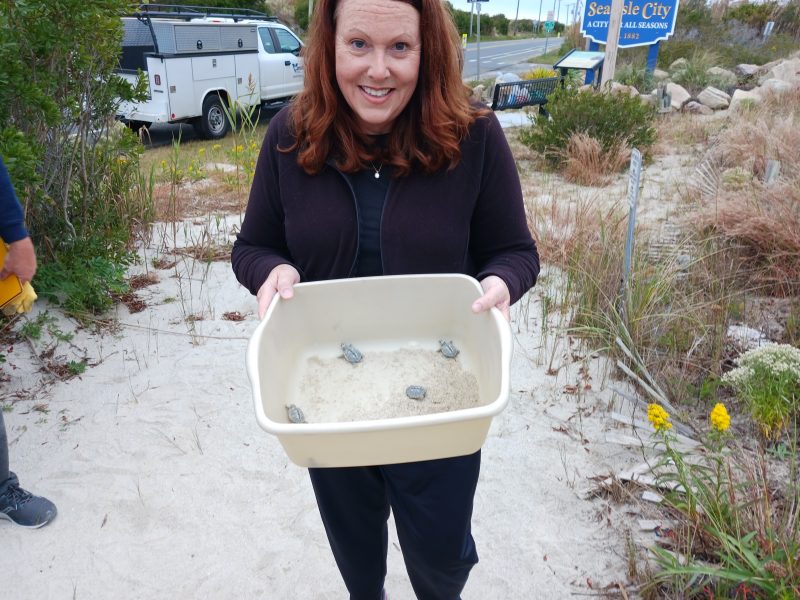
The terrapins have not been classified as endangered in New Jersey, but Corretini said they are threatened by development. Only one egg in a thousand grows up to be an adult turtle, Ahern has explained in previous interviews.
Over the years, Ahern and his wife, Susan, the other co-founder of Sea Isle Terrapin Rescue, have worked with officials from the city, Cape May County and the Wetlands Institute in Stone Harbor to help create safer conditions for the turtles.
Using a donation from Sea Isle’s Environmental Commission, the Aherns and others were able to construct two turtle nesting boxes six years ago next to the marshlands behind the city’s library at 48th Street and Central Avenue.
Along with volunteer helpers, Ahern plans to dig through the sand at the two nesting boxes at the library on Saturday, Oct. 28, in search of babies and eggs. They will return to refurbish the boxes in the spring.
This year, they were able to build a new turtle nesting box near Second Street in an area known for a lot of diamondback activity. It is smaller than the two nesting boxes at the library, but there are plans to expand it.
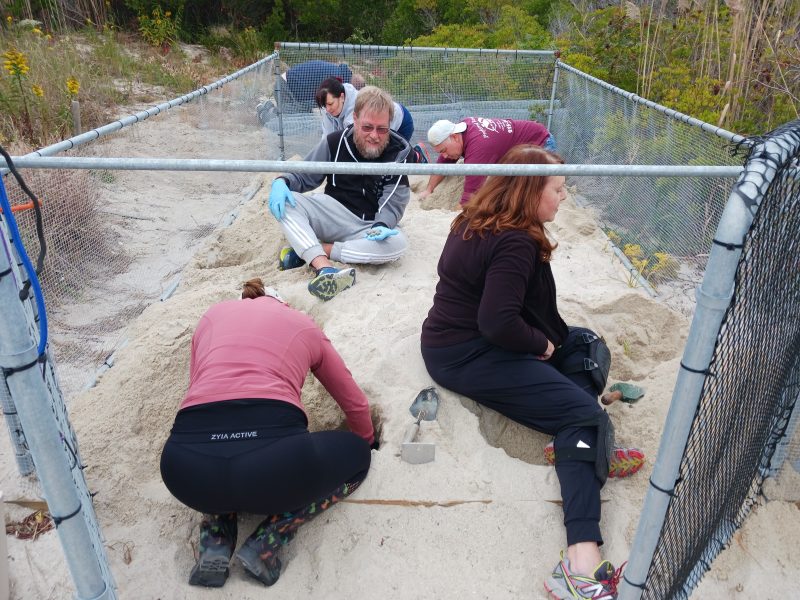
Ahern said the first year for the nesting box was successful – no predators were able to get inside to raid the eggs.
He credited Jeff Lawson for the design and solid construction of the new box. Lawson used metal pipes and fencing to make it stronger than the two nesting boxes at the library. The other nesting boxes are constructed of plastic pipes and netting.
“It wasn’t a new design, just better materials,” Lawson said of the new nesting box.
In addition to the six live baby turtles, the volunteers also found clutches of unhatched eggs in the nesting box. Ahern estimated that about 20 individual turtle nests were discovered.
He doubted that the unhatched eggs will bear any live turtles. He noted that the turtles should have hatched from those eggs much earlier.
“I think we’ve hit the point where they should have hatched,” Ahern said.
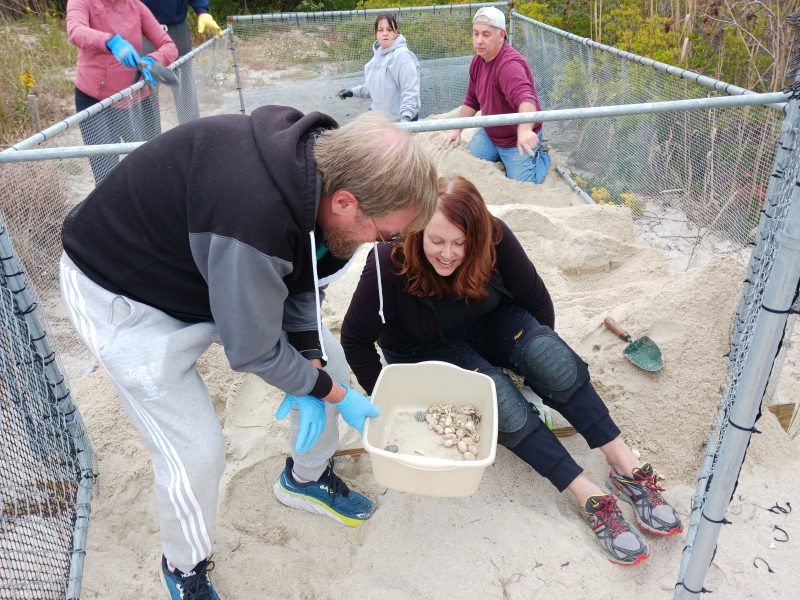
As for the six live turtles that were found, Ahern was unsure how they were able to survive while buried in the sand.
“I have no answers for that,” he said. “They’re either asleep or saying, ‘I’m not moving around or getting out,’ or they’re pushing through the sand and saying, ‘I want to get out.’”
For them, it was finally time to leave the nest.







